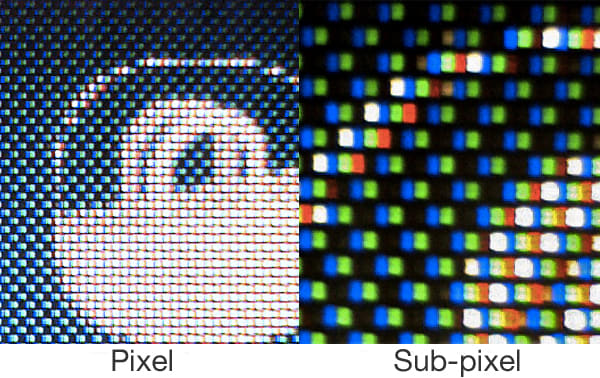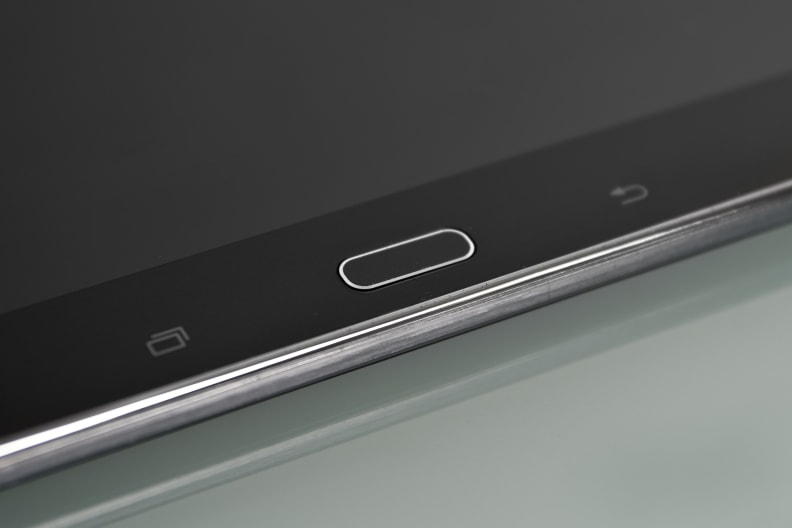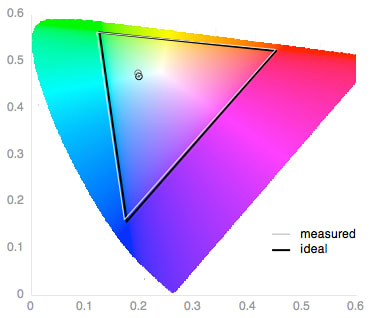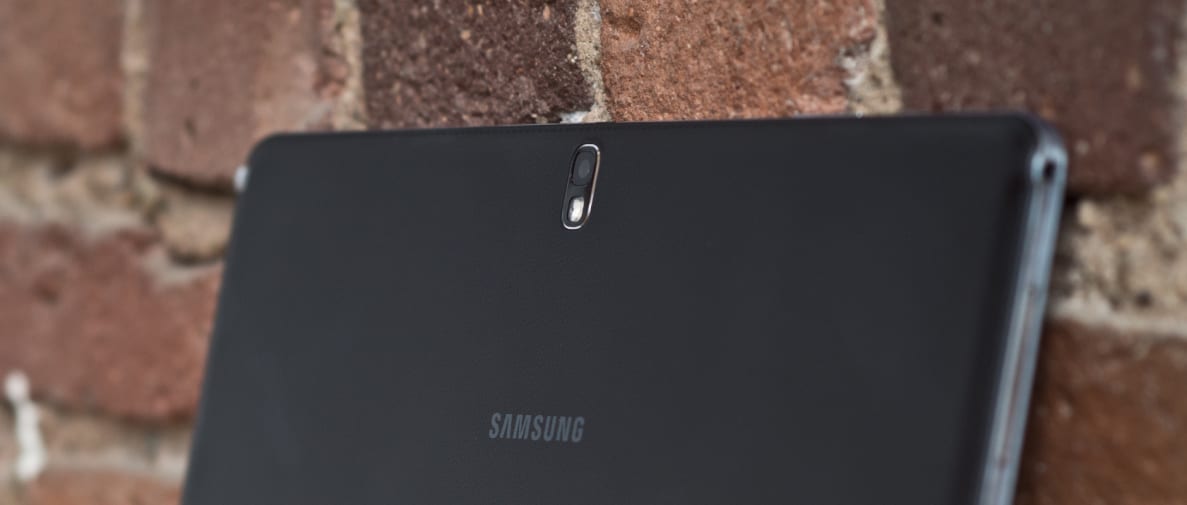Ignoring the software for a moment, one thing is certain: The hardware is damn nice. Building on the successes of the Galaxy Note 10.1", Samsung's hardware division really brought its A-game when building a tablet to go toe-to-toe with the rest of the Android ecosystem. Unfortunately, TouchWiz brings its own issues to the table in the form of poor software optimization and cruft.
Through our time with Samsung's newest top-end slate, we kept wondering just who this tablet is for. For true power users Microsoft has been making a strong case for replacing your laptop with a tablet. On the other end Apple's iPad continues to dominate with casual users. What's left for a high-end tablet to aim for? The hardware here is excellent, and the multi-tasking makes judicious use of all that screen real estate, but it's hard to imagine anyone getting all their work done on an Android device. This may be Samsung's flagship tablet, but it's a ship without a port.
Design
Everyone goes crazy for a sharp dressed... tablet?
If there's one thing that stood out about last year's Galaxy Note 10.1, it was the faux-leather backing. This year, Samsung gave its flagship tablet the same aesthetic—with the option for a more photogenic black color as well. Unfortunately, the sides and front of the tablet still feel like cheap plastic.
That helps keep the overall weight of the device low, sure, but it feels chintzy in a world of titanium and aluminum competitors. It's the first thing you'll notice when you pick up the device, and it's a compromise. It sets a fitting tone for the entire experience, though; this is a tablet chock full of trade-offs.
Despite a comparatively enormous screen size for a tablet, this thing will slip into just about any normal-sized messenger bag. After all, it's 11.63x8.03 inches, and only 0.31 inches thick. If you really want to ditch a laptop—which is not a good idea—in favor of a tablet, this is a very portable option.
{{ photo_gallery "tour" }}
Like all tablets, the defining feature is the screen. In this case, it's a 12.2-inch monster of a TFT LCD with a resolution of 2560x1600. For those of you keeping score at home, this qualifies as a "Retina" display; your eyes won't be able to see jagged pixel lines on this tablet from a normal viewing distance. It's an impressive sounding spec, but as we'll address in a moment, it's ultimately a rather hollow claim.
Like its predecessor, the Galaxy Note Pro has a bunch of bells and whistles nestled inside the chassis. Front- and rear-facing cameras, 802.11ac wireless card, GPS... enough items to make anyone's eyes glaze over. Taken at face value, this is a great thing: The more features you have on your device, the better it is, right? Well, in this case you may never use many of them. For example, the IR blaster is great in theory—but if you have a SmartTV, you can often just stream things from the tablet to the TV or control it with an app over WiFi. Similarly, the GPS works when connected to the internet, but if you don't have the 4G LTE model of Note Pro you're outta luck if you get lost on your way home from a new place. Many of the features of the Samsung Galaxy Note Pro sound great, but I get the eerie feeling that many of these things were crammed in to list on a spec sheet and little else.
{{ photo_gallery "design" }}
If there's one part of the Note Pro 12.2 that we have unreserved praise for, it's the included S pen. It slots into a dedicated compartment in the device, and it's excellent. If you've ever looked at a Surface Pro 3 and gotten jealous of that wonderful pen, the Samsung Galaxy Note Pro has one all of its own. It's also the one area where we're very glad Samsung has done some customizing. You can draw with it, use the pen to write notes that are turned into text via the tablet's character recognition system, or hold the stylus just above the screen to access a suite of different options. The tablet is smart enough to ignore your palm resting on the device if you're drawing with the pen and you can even draw a box anywhere on the screen and run one of the tablet's main apps inside of it. It's not perfect, but it is the one feature that sets the Note Pro 12.2 apart from its rivals.
Performance
Big on specs, low on optimization
If you were to look at the lab notes, you'd see a tablet that performs extremely well by the numbers. Truly, it's a very high-powered machine that hits all the superlatives: Great color, decent contrast, great battery life. However, it's where the rubber hits the road that the Galaxy Note Pro runs into problems.

It's not the best, but the Note Pro's contrast is "good enough" for most.
On paper, we see that it has an outstanding color gamut and decent contrast—nothing can take that away from the Galaxy Note Pro. However, because of the pixel substructure, effective resolution is cut down considerably depending on what colors are displayed. In a traditional display, each pixel has a red, green, and blue subpixel. However, in a PenTile display like the Samsung Galaxy Note Pro's—there's a fourth subpixel—white—and they're shared between adjacent pixels. Because Samsung counts each pixel has having only two subpixels, and not four, effective resolution is cut by roughly 25%-50% depending on the color displayed. Despite what the spec sheet says, this slate has a varying effective pixel density of somewhere between 125-200 pixels per inch. It's still perfectly fine most of the time, but that's one big, fat asterisk when it comes to performance.
You'll see these resolution issues intermittently as a strange lattice-like pattern in a few colors. Tablets and phones with PenTile displays were roasted in the past for eminently visible resolution problems, but I'm here to tell you that it's not as much of an issue anymore. It just needs to be noted that the Galaxy Note Pro's screen is nowhere near as good as the spec sheet would have you believe. It's still close to print-quality—save for pronounced issues in red, green, and blue—but overall we'd say the screen is adequate, if highly reflective.

Because of the pixel structure, the Note Pro has trouble with super-fine details.
All else aside, the Samsung Galaxy Note Pro 12.2" has an outstanding battery that lasts a hair under 10 hours playing video. Even when making liberal use of the wireless card, you can expect that behemoth of a power cell to last you through just about any workday or weekend. Despite that huge screen, you don't have to worry so much about sucking your juice dry prematurely.
The tablet does well with benchmarks, but such tests largely take software out of the equation. When you actually use the tablet, you'll notice the occasional hiccup in performance. Nothing that'll ruin anything, mind you, but the tablet doesn't run as well as a 2.9GHz Exynos 5 Octa processor backed up by 3 gigabytes of RAM should run. Much of that is no fault of the hardware—rather, it's due to the software optimization (or lack thereof). It's extremely frustrating that you're not exactly getting what you pay for when you buy this tablet. If you're paying for the best, you should get it, right? So why is it that the $220 Nexus 7 can scroll through web pages smoothly and the $750 Note Pro can't?
Though it uses different hardware, this video is a great illustration of just how big this problem is for Samsung devices. On the Galaxy Note Pro, too, there were optimization issues on Chrome and opening apps. In this case, the culprit is unquestionably the software.
Check out our Science Page for a closer look at all of our performance results.
In use
A lot left on the table(t)
Though it'll get me in trouble with the enthusiast element of the Android community, I'm going to go out on a limb and point out that the Magazine layout of the Galaxy Note Pro's homescreens is actually quite useful for the business crowd. The well-designed calendar layout and Flipboard integration are also surprisingly refreshing for content hounds. Unfortunately, this is one of the things that brought Samsung and Google's conflict to a head, so this interface is going to be unceremoniously tossed into the bin on newer models.
I have no issue with the addition of function-driven homescreens on a tablet because most users will end up making something resembling their own anyway. If you want to change it, simply hold your finger down on a panel until the tablet allows you to edit your magazine page. It's simple, good-looking, and it's the sort of thing Android should be moving toward by default.
Additionally, some of the unique features of TouchWiz are also useful: Multi-window support is logical for such a large tablet, while voice control for your camera, alarm, and music is top-notch. The aforementioned multi-window apps are fantastic on a large-screened tablet if you need to bounce from spreadsheet to spreadsheet—while streaming the World Cup in the corner. It's a significant drain on available resources, sure—but it's something non-Windows tablets don't usually do.
{{ photo_gallery "magazine-ui" }}
Despite the added focus on more efficiently driving content to interested users, improving Samsung's optimization of Android was ignored. Even though the Galaxy Note Pro runs a forked version of Google's latest software (4.4), many of the layout and usability problems present in earlier versions of TouchWiz are not only still there, but made worse. For example, settings are much more spread out and less organized. Everything's still there, but it takes a lot more hunting to find what you want. This is not an easy OS to use without prior experience, even if you're used to Android on other devices.
In spite of that, just about all the apps found on the Play Store work famously on the Galaxy Note Pro, and some of the included apps are actually fairly useful if you're a member of their target audience. The New York Times app is a great way to access their content if you're a subscriber, and must-have apps like Dropbox, Netflix, and the Google suite come pre-installed.
You're not forced to use the janky, default redundant Samsung versions of stock apps, but there's no way to remove them, either. That would be fine and well if they behaved themselves, but they drain available resources as they toil away in the background, doing nothing. Thank heavens the battery is great, but it's depressing to know that the tablet could have been so much more.
Conclusion
There but for the grace of TouchWiz.
There's certainly a market for a powerful sub-$1,000 tablet that can function as a laptop replacement for business users on the go. After all, it shouldn't be that hard to get e-mail, web browsing, and office functionality into a single device. The Note Pro 12.2 takes dead aim at this part of the market, sweetening the deal further with the addition of the wonderful S Pen. When it debuted at CES 2014 in January, it seemed to be hitting the market at just the right time.
But with the market trending toward hybrid devices for their blend of function and portability, the Note Pro had to make a strong case for going without an included keyboard. Unfortunately, for all the things that the Samsung Galaxy Note Pro 12.2 gets right, it's hindered by a poorly optimized version of TouchWiz that slows down the overall experience, hinders easy operation, and fails to get the most out of the high-end components. Those high-end components also drive the price up, placing it in the dangerous middle ground where it's too expensive for occasional browsers and not as good for business use as hybrid Windows laptops that cost about the same.

Most people either love or hate physical buttons or capacitive icons.
Windows is still king of the hill when it comes to operating system usage in the professional world. And now that Microsoft's Surface Pro 3 offers a device that's not only a stellar tablet but a great laptop, things are looking a little grim for the Galaxy Note Pro. Though the base model of Surface Pro 3 is much more expensive, it can run all the same software that you use at work. It's not hard to justify spending an extra couple hundred dollars when you can run almost any piece of major software from the last decade.
And if cost is your concern, there are more and more hybrids hitting the market that give you a better bang for your buck. They're a tad bulkier, but they bring a physical keyboard and full USB ports to the table. The Note Pro's S Pen is great, but nothing beats a keyboard when you need to take a lot of notes.
None of which is meant to say that the Note Pro 12.2 is a bad tablet—far from it. It has a big battery and a decent screen in a wafer-thin package, with an excellent stylus and access to a massive collection of Android apps. But unfortunately this is another example of Samsung putting out flagship hardware with flagship features and undercutting the entire experience by failing to get the little things right. It's not a bad tablet, but it's not nearly as good as it could've been.
Science Introduction
Because many of our tests take software out of the equation, we found that—unsurprisingly—the hardware of the Galaxy Note Pro 12.2 is quite impressive. It has a huge battery, passable screen, and accurate colors. Much of what we find fault with on this tablet has nothing to do with its performance numbers, and more to do with its software.
Screen Performance
Decent numbers, in spite of itself
Leaving aside the issues introduced by a PenTile display—effective resolution vs. actual resolution—this screen posts great color accuracy scores, and very respectable contrast. You can take solace in the fact that if you want to watch movies on your work slate, they'll look as good as they would on your laptop.

Such a pretty color gamut. Eat your heart out, iPad.
Reds, greens, and blues are all kept to roughly where they should be, and there are only a handful of tablets that have really mastered this so far. Even the iPad Air shifts blues a bit, so the ceiling isn't as high as it is for televisions. Kudos, Samsung!
Contrast is a little on the crummy side, but honestly, it's good enough for most. With a black level of 0.34 cd/m2 and a middling peak brightness of 344.9 cd/m2, the Samsung Galaxy Note Pro's contrast ratio sits at a respectable-but-unenthralling 1009:1. If you turn down the max brightness, you may notice some some fine details lost in shadows here and there, but on the whole your eyes should find no fault with the color or contrast performance of the screen—but you will see something else.
On paper, that 2560x1600 TFT LCD seems like a high-res option, even at 12.2 inches. Doing the math with those figures would lead you to believe that the pixel density is about 247 pixels per inch. However, because sub-pixels are shared from pixel to pixel, this isn't always the case based on the colors displayed. In actuality, the maximum resolution is somewhere closer to 2090x1309. Which, on its face isn't exactly a horrible thing. If "print quality" images are to be considered 200 DPI or higher, this clears the bar—most of the time.

Because of the pixel structure, the Note Pro has trouble with super-fine details.
Unfortunately, when the pixels don't render with all subpixels in use, you'll notice visible areas of "off" screen. This only happens with areas of only blue, green, or red—and even then, because of the way your eye sees color, the worst problems are pretty much visible only when you're looking at white or green areas of the screen. When this happens, effective resolution drops to half of the listed specs, making it just above 100 PPI.
If you're wondering what the benefits of this are, you're not alone. When this display type first came on the market, high pixel density screens were unheard of, and the problems introduced by PenTile technology made enthusiasts groan whenever they saw it—and rightfully so. Though battery life is improved by using fewer pixels, the tradeoff of severely reduced effective resolution made images gross to look at. PenTile displays used to be horrible: Used to be.
Now that Samsung is able to cram in a huge number of pixels, this problem is far less pronounced than it was. Even half of 250 PPI is about where the best tablets were two years ago, so this is more of a sign of moved goalposts than an objectively terrible resolution. However, you will notice it every now and again, and I don't want you to think that your tablet is broken—it's meant to work that way.
Battery Life
It's going the distance
I had to re-run the battery tests a couple times to make sure, but the Samsung Galaxy Note Pro has an impressive battery—and power handling. Able to play video back to 9 hours and 22 minutes, you'll be able to ride the battery pretty hard without paying mind to it. That's a huge boon to your use of the device, and a very large check in the "Pro" column.
Reading eBooks was a little worse, but otherwise respectable. Clocking in at 7 hours and 53 minutes with a mostly-white screen is tough for any tablet to do, so this score ranks among the best on the market.
I should point out that our battery tests are performed with the backlight maxed and all wireless connections disabled. Your mileage may vary based on your preferred settings, but you might be able to get away with turning down the backlight for increased battery life.
Other Tests
Little else to note
This is normally the time where I'd tell you about nerdy things like benchmark scores, tablet heat, and other stats that mean more on paper than they do in the real world. Because the software gets in the way of the tablet more often than not, benchmarks aren't really going to give you a full picture of how the tablet performs when you use it. We don't score them for tablets anyway, so it's not reflected in the scores quite yet to begin with.
Moving on, many of the other quirky problem areas like heat aren't really an issue. Though Samsung's flagship tablet has its issues, many of the commonly harped-on problems are gone. Except for one: Reflectivity.
Tablets are very commonly poor choices to take with you to the beach, but this one will be nigh-unusable. For whatever reason, the screen's coating will send 7.1% of all light shone on the exterior in every which way, but direct reflections are bounced back at a 20.6% intensity. That's enormous if you have the sun to your back; sharp reflections are super distracting, and if they're lit by the sun, they'll easily overpower the backlight of the Galaxy Note Pro.
Meet the tester
A seasoned writer and professional photographer, Chris reviews cameras, headphones, smartphones, laptops, and lenses. Educated in Political Science and Linguistics, Chris can often be found building a robot army, snowboarding, or getting ink.
Checking our work.
Our team is here for one purpose: to help you buy the best stuff and love what you own. Our writers, editors, and lab technicians obsess over the products we cover to make sure you're confident and satisfied. Have a different opinion about something we recommend? Email us and we'll compare notes.
Shoot us an email

